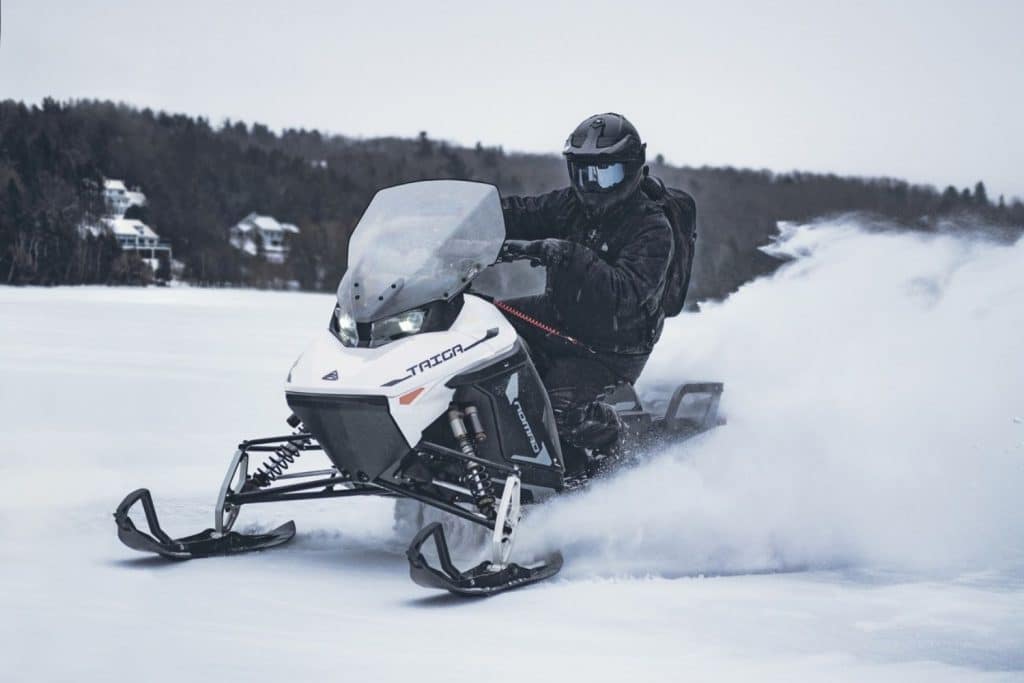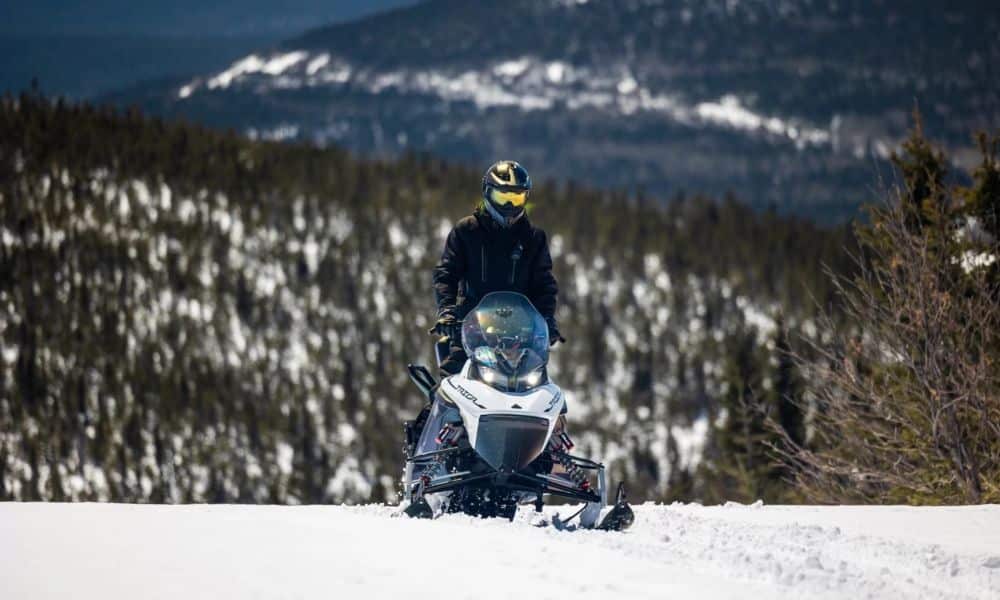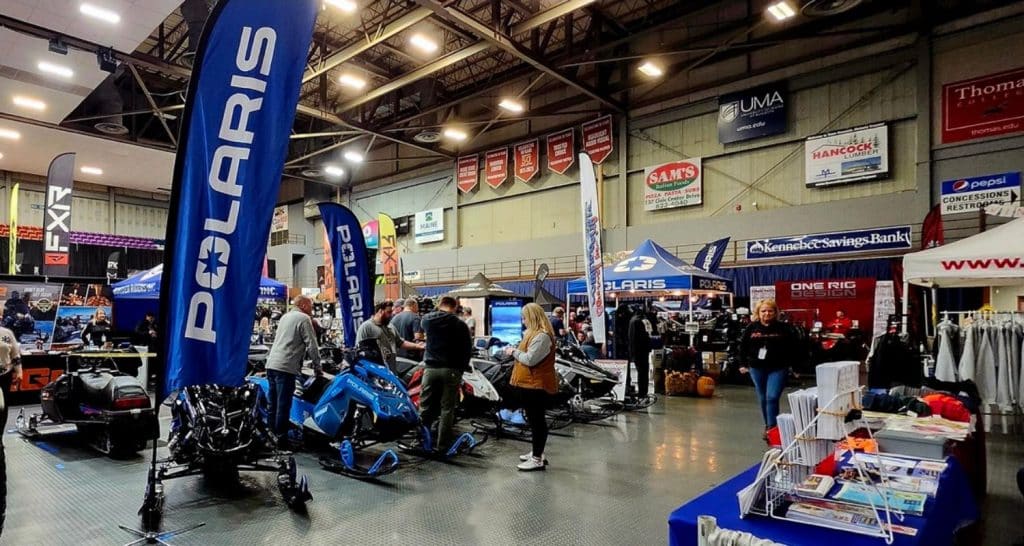The young company Taïga Motors, creator of electric snowmobiles, is in turmoil. The departure of its CFO in June 2024 and the stoppage of manufacturing since April do not bode well. 70 workers faced redundancy in April, out of a total workforce of 300. How many are there today?
Comments are flying in the media and on social networks. Criticism is rife, especially as the company (like others) has benefited from government support.
But the story is a little different, so let’s play devil’s advocate, because Taïga Motors has made many efforts and, despite the difficulties, has made a positive contribution to the Quebec economy.
The beginnings and financing of Taïga Motors
Taïga Motors was founded in 2015 by three McGill University engineering graduates, Samuel Bruneau, Gabriel Bernatchez, and Paul Achard. The company was taking a cue from Tesla to electrify electric snowmobiles and watercraft. In 2021, the company made a significant leap by listing on the Toronto Stock Exchange. It raised C$300 million in market capitalization.
It created 300 jobs at its LaSalle site. For this plant and related jobs, it received a loan of $30 million from the Quebec government and $10 million from the Canadian government.
Taïga Motors generated revenues of $16.1 million in 2023, resulting in a loss against operating costs. It also incurred a net loss of $14.38 million for the first quarter of 2024.
The situation is currently at a standstill. The company has taken shelter from its creditors.

Setting the record straight
Indeed, government funds have been loaned to the company, and there are risks of losing them. Some snowmobilers are the first to criticize the sums loaned. By reacting in this way, politicians could stop helping the development of future engines, since even the community criticizes the financial loans granted.
Pierre-Yves Mc Sween, on 98.5 FM, was the first to criticize government loans, claiming that snowmobiles were useless. He argued that “snowmobiles pollute and make noise”, whereas the subsidies were aimed precisely at reducing greenhouse gas emissions and noise levels.
Although snowmobiles will not be affected by the end of combustion engines from 2035, it’s time to look at the future of motorization.
To provide a solution to this threat, three young engineers have rolled up their sleeves. They wanted to put their knowledge at the service of the future of the snowmobile planet, which includes clubs and trails. They didn’t turn first to grants, they took the company public on the Toronto Stock Exchange and sold shares to private investors from all over the world. They brought over three hundred million dollars back to Quebec, which they invested in salaries, production, R&D and taxes.
Have the three founders become millionaires?
On February 27, 2021, the Journal de Montréal ran the headline: “Multimillionaires at 29 thanks to electric snowmobiles”. No, the three engineers did not become millionaires. What they did do was raise the money to start production. It was very clever to go public and solicit private money. Their forecast of selling 76,000 vehicles was certainly too optimistic.
40 million dollars, a drop in the bucket?
The young snowmobile manufacturing company received these subsidies mainly in the form of loans. Taiga could rise from the ashes or be taken over. Governments could recoup a portion, spread over a decade or so. However, everything needs to be seen in context. 40 million dollars to help a new snowmobile manufacturer is reasonable. As the FCMQ reminds us: “Annually, snowmobiling in Quebec generates over $3.27 billion in economic spinoffs and sustains more than 14,000 jobs.
Comparison is consolation. Quebec has just given $413 million to the French company Airbus (located in Mirabel) for the manufacture of the A220, in which the government, it is true, owns a 25% stake. That’s more than $2 billion in public funds contributed to the A220 since 2016, when Bombardier sold the C series (and its debts) for a symbolic dollar.
On the battery front, Les Affaires magazine reports that “Quebec has committed to subsidizing Swedish multinational Northvolt to the tune of $1.37 billion”.
Every time, we’re talking about our taxes.
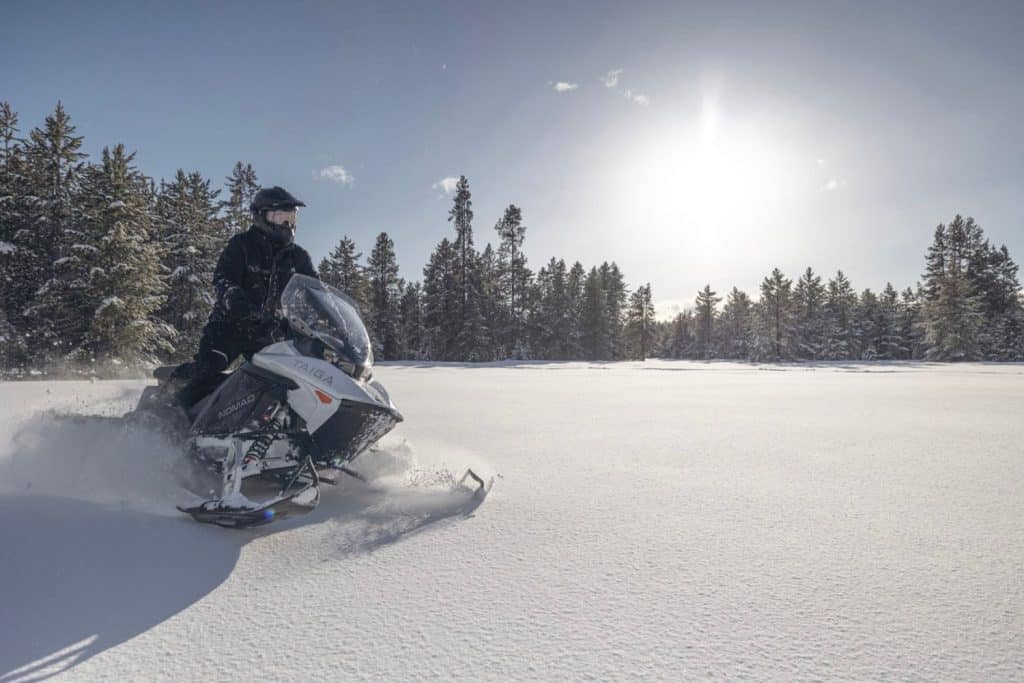
Planned with Québec’s Fonds d’électrification et de changements climatiques (FECC)
Are you familiar with the carbon tax you pay, for example, on your gasoline purchases? It goes into the electrification fund, which is financed by revenues from the carbon market. Since its creation in 2013, it has generated more than $8.8 billion. It is used to finance projects seeking to reduce greenhouse gas emissions, adapt to the impacts of climate change and electrify the economy. That’s exactly what Taïga was all about, and the money you spend filling up your snowmobile’s gas tank has every right to go back into the future of snowmobiling.
Snowmobiles will not be affected by the end of combustion engines in 2035 (for the time being).
The law concerning the cessation of combustion engines only affects light road vehicles, i.e. cars and light road transport, with a gross vehicle weight rating of less than 4,536 kg. According to Quebec’s greenhouse gas emissions inventory (2021), 42.6% of Quebec’s GHG emissions come from the transportation sector. More than half of these emissions come from light road vehicles, which are grouped under the VZE 2025-2035 standard.
However, political change should not be underestimated. One day in the future, snowmobiles and off-road vehicles could be singled out and forced to comply with the zero-emissions regime.
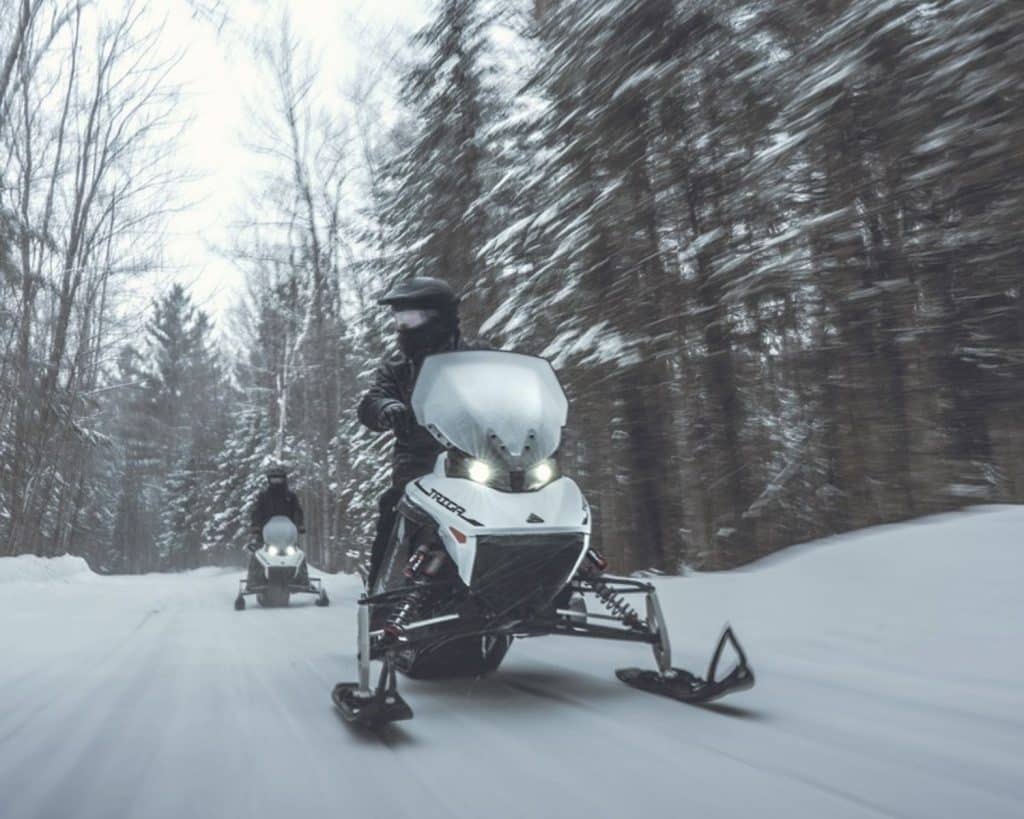
The future of Taïga and snowmobiling in general
Taïga is in the hands of liquidators who are looking for buyers, and some have already come forward. The interest is still there. And let’s not forget BRP and Ski-Doo, who are working hard on electrification and new energies.
However, there’s no point in developing electric snowmobiles if the batteries can’t be recharged in the wild. If manufacturers and the community are to have any hope of selling non-thermal-powered vehicles, they need to look into setting up electric charging stations. To do this, they could draw on the “La Stratégie québécoise sur la recharge de véhicules électriques” fund, which has a budget of $514 million for the period 2023-2028.
There are alternatives to battery-powered electricity. Thermal engines can also be modified to use new fuels such as biofuels, natural gas, LPG (liquefied petroleum gas) or a fuel cell (FCEV).
Synthetic fuel, such as Porsche’s eFuel, is capable of reducing CO2 emissions by 85% on internal combustion engines, without any special modifications.
Hydrogen is also an alternative that Kawasaki is exploring, as is Airbus, which is announcing a hydrogen-powered aircraft for 2030.
In conclusion, lost tax money is one of the risks involved in making the transition to snowmobile engines. Compared with all the other projects currently underway, it remains reasonable. Quebec society has benefited from the economic spin-offs in terms of taxes and employment. The Taiga case should make us reflect on the future of snowmobile motorization, and on the importance of defending this means of transport and leisure, which was born in Quebec!
